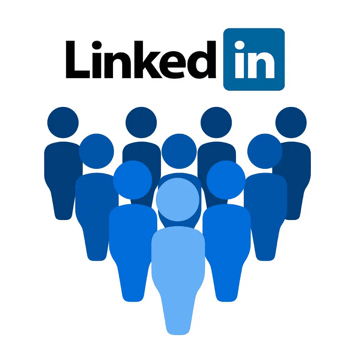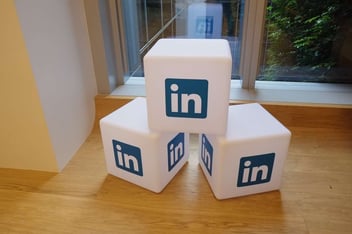最大化您的影响力:2025 年的社交媒体广告
根据 statista.com,六大社交媒体平台(Facebook、Instagram、Twitter、Pinterest、LinkedIn、YouTube 和 Snapchat)的用户数量持续增长,已经达到数亿甚至数十亿。
利用社交媒体渠道作为营销工具将比以往任何时候都更为重要。
随着这些社交媒体平台的发展,企业将越来越多的营销预算投入到社交媒体广告中,以分享内容、建立关系和吸引关注。
社交媒体广告为何重要?
90% 的营销人员表示,社交媒体对他们的整体营销策略至关重要;到 2024 年,社交媒体广告的规模已超过 1400 亿美元。
-
Facebook 是最受欢迎的社交媒体广告平台,63% 的营销人员使用它。
-
Instagram 是第二大最受欢迎的广告社交媒体平台,有 47% 的营销人员使用它。
-
Twitter 是第三大最受欢迎的广告社交媒体平台,有 35% 的营销人员使用它。
-
LinkedIn 是第四大最受欢迎的广告社交媒体平台,有 29% 的营销人员使用它。尤其是对于 B2B 受众而言,您需要在 LinkedIn 上进行营销。
-
Pinterest 是第五大最受欢迎的广告社交媒体平台,有 25% 的营销人员使用它。
-
社交媒体广告的平均点击成本(CPC)为 1.70 美元。社交媒体广告的平均每千次展示成本(CPM)为 7.19 美元。
-
社交媒体广告客户的投资回报率(ROI)高达 300%。
社交媒体广告既便宜又有效,每个营销团队都可以使用。除了社交媒体的普及,社交媒体广告还具有其他一些优势:
-
社交媒体广告的主要优势之一是能够利用排序算法和分析技术锁定特定受众,这是传统广告方法无法做到的。与其他广告形式相比,这种有针对性的方法使您能够以较小的投资接触到相同数量的受众。
-
根据平台的不同,您可以使用多种广告格式。视频、文本、照片、信息、购物广告、引导广告等。- 可以吸引和取悦您的潜在客户。此外,不同程度的互动性和侵扰性也非常有效。所有这些都非常适合您的预算。
-
由于通过在线分析跟踪社交媒体广告的效果非常容易,因此与 其他平台相比 ,将广告转化为销售线索和销售额 要容易 得多。与定位受众的能力一样,这也大大提高了您在社交媒体上所花每一分钱的效率。
要开始使用社交媒体,您应该把重点放在七大社交媒体平台上:Facebook、Instagram、Twitter、Pinterest、Linkedin、YouTube 和 Snapchat。这些都是最大的平台;在这些平台上投放广告将为您带来最好的每美元收益。每个平台投放广告的方式各不相同,因此我们将逐一介绍。
主要社交媒体渠道
脸书
它不仅是最大的平台--这意味着您可以确保您要接触的受众都在 Facebook 上--而且它还是受众定位的最佳平台。到目前为止,Facebook 提供的服务是业内最好的。任何社交媒体广告活动都离不开 Facebook 广告,它拥有庞大的用户群和最好的定位工具。
Facebook 允许您锁定三种特定类型的受众:
- 核心受众。这些受众由他们的兴趣、年龄、位置、行为和联系来定义。
- 自定义受众。这些人曾以某种形式与您的企业有过互动。无论是访问过您网站、使用过您应用程序的人,还是您电子邮件列表中的一员。
- 相似受众。这些人与您已经获得的客户、顾客和潜在客户相似。
在格式方面,您可以在 Facebook 上使用多种格式。最突出的有
-
图片广告
-
视频广告
-
故事广告
-
线索广告
-
文字广告
每种格式都有其优势。根据您想要传达的信息,您需要相应地调整广告格式。例如,如果您的广告过于复杂,一张图片难以容纳,您可能需要使用视频广告。
如果您必须在 Facebook 上选择一种广告格式,那么引导式广告是您的不二之选。引导广告是 Facebook 的强项,可以让您充分利用 Facebook 提供的一切优势。
Facebook 拥有 Instagram,因此 Instagram 可以分享 Facebook 利用的精英受众定位功能。尽管同属一家公司,但 Facebook 和 Instagram 的平台不同,因此 Instagram 的广告系统也略有不同。
Instagram 允许你以3 种不同的方式运行广告:
- 直接从 Instagram 创建广告。这只是推广你自己 Instagram 账户中的故事和帖子。
- 从你的 Facebook 页面创建广告。这允许你将 Facebook 账户链接到 Instagram,并在两者之间同时管理广告。一个不错的选择!
- 在广告管理器中创建广告系列。Instagram 的广告管理器可帮助您充分利用 Facebook 和 Instagram 提供的所有广告工具。
您只需开始在 Instagram 上运行广告,就可以将您的账户从个人账户转换为专业账户。没有这一步,你将无法运行广告。
Instagram 使用与 Facebook 相似的格式:
- 图片广告。
- 视频广告。
但它还包括
- 故事广告。
- 探索广告
- 购物帖广告。
如果你想在 Facebook 和 Instagram 上都投放类似的广告,最好选择它们的通用格式。这将使广告活动更易于管理,但与此同时,你也无法将 Instagram 作为一个平台发挥到极致。故事 "和 "探索 "页面让 Instagram 独一无二,不使用这些工具可能会带来不利影响。更不用说不断增长且精心设计的 "购物帖 "广告了。
推特
在六大社交媒体平台中,Twitter 是最小的一个。它 "仅 "拥有 3.3 亿用户,而且它并不是投放广告的最佳平台,因为有机覆盖仍然是品牌在 Twitter 上取得成功的主要因素之一。尽管如此,Twitter 仍然是投放广告的绝佳场所。
Twitter 的广告理念主要集中在五个方面:
- 知名度。这可以理解为到达率或曝光率,或者说你的广告能影响多少人。
- 参与。通过广告,让更多人参与到您的 Twitter 账户活动中(即点赞和转发)。
- 追随者增加。
- 网站点击
- 应用程序下载。
Twitter 的广告形式非常有限。Twitter 的所有广告都集成到了服务提要中,这意味着无论推文采用何种格式,广告都会与之绑定--文字、视频和图片。对于大多数广告活动来说,这通常绰绰有余,因此这对大多数营销人员来说应该不是问题。
Twitter 似乎特别适合 B2B 和电子商务广告。与其他平台的用户相比,Twitter 用户在网上花费的钱更多,因此,如果你的目标受众是这些用户,Twitter 将是一个完美的广告投放平台。
品趣网
Pinterest 是最小众的平台。在其 3 亿用户中,大多数是女性。根据目标受众的不同,这可能是一个巨大的优势,也可能是一个劣势。
然而,Pinterest 不仅仅以女性用户为主。
与 Instagram 相似,Pinterest 也是一个基于图片的平台。它并不像 Twitter 或 Facebook 那样注重分享想法;它更注重的是看到很酷的东西并与你的朋友和粉丝分享。这使得 Pinterest 可以很好地适应广告。如果你能让你的广告在视觉上吸引 Pinterest 上的目标受众,他们甚至会喜欢看你的广告!这并不容易,但如果能做到这一点,你将收获颇丰。
在 Pinterest 上做广告,对于可以利用摄影进行宣传的企业来说尤其容易。例如,任何销售食品相关产品的企业都可以轻松做到这一点,因为在 Pinterest 上发布好的食品图片总是会成功的。
在 Pinterest 上做广告有四个基本步骤:
- 选择一个图钉,推广你最好的图钉,让尽可能多的人看到你的图钉。
- 选择你的目标受众,这样 Pinterest 就能帮你明确你的图钉会被哪些人看到。
- 选择是否要为参与度或网站访问量付费。
- 跟踪你的表现。
LinkedIn 是B2B 社交媒体和社交媒体广告的最佳选择,因为 LinkedIn 是专业人士的主要平台。如果你的目标是接触其他企业或尝试使用广告进行招聘,你会发现这里是最成功的地方。虽然 LinkedIn 的平台不如 Facebook 那么大,但 LinkedIn 用户在他们的个人档案中填写了大量详细信息,这使得 LinkedIn 可以为广告商提供一些强大的定向选项。LinkedIn 的定位功能可以访问独特的人口统计数据,例如
- 职位名称
- 工作职能
- 行业
LinkedIn 的精准定位使其在产生潜在客户方面非常有用。确保在 Linkedin 上投放广告时专注于这一点,因为这正是它的最佳用途!
在 Linkedin 上投放广告时,您可以选择多种广告形式:
- 图片广告。
- 视频广告。
- 关注者广告。
- 聚焦广告。
- 旋转木马广告。
- 招聘广告。
- 消息广告。
消息广告是 LinkedIn 最独特的形式。直接发送信息作为广告在其他平台上效果不佳,但在 LinkedIn 上却似乎很管用。只要广告的个性化程度高,而且不向同一个人发送过多信息,LinkedIn 用户大多不介意接收信息广告。个性化的信息广告在产生潜在客户和追求潜在客户方面尤为有效。
YouTube
YouTube 与本文中的其他平台不同,因为它也是一个搜索引擎。它是仅次于谷歌搜索的第二大搜索引擎。多年来,YouTube 已从一个简单的视频目录转变为一个真正的社交媒体平台。创作者更新和调查等功能就是最好的证明。
YouTube 一直是广告宣传的绝佳场所。既然 YouTube 是观看视频的最佳场所,自然也是视频广告的首选之地。用户会在点击任何视频之前或中间看到这些广告。YouTube 还拥有极其复杂的定位工具,让您可以毫不费力地将广告送达目标受众。由于 YouTube 上的视频范围非常广泛,因此很容易将视频广告追踪到与您销售的产品或服务有一定关联的视频上。您在制作冥想应用程序吗?YouTube 会把你的广告放在瑜伽练习指南视频之前,任何对瑜伽感兴趣的人都能看到你的广告。
YouTube 唯一的问题是,它提供的广告格式非常有限。横幅广告即将被淘汰,所以你只能做视频广告。视频广告的制作成本和运行成本都是最高的,因此要确保你在 YouTube 上发布的视频广告物有所值。
Snapchat
Pinterest 的用户大多是女性,而 Snapchat 的用户绝大多数是15 至 25 岁的年轻人。如果您的目标受众是年轻人,那么 Snapchat 就是您投放广告的好地方。与年轻受众一起,Snapchat 为您的广告提供了更新、不那么传统的形式:
- 故事广告(如 Instagram)
- Snapchat Discover 中的赞助商磁贴
- 增强现实(AR)镜头
AR 镜头 是 Snapchat 独特的广告功能。AR 镜头允许用户创建和捕捉精彩瞬间,并在设计为广告的环境中与朋友分享。您可以与 Snapchat 一起为 AR 镜头创建模板,但仅此而已。剩下的工作就交给用户吧。他们使用 AR 镜头,并向他们的追随者宣传。
请记住,Snapchat 主打短时间的信息和刺激。30 秒的视频广告可以在 YouTube 上播放,但 Snapchat 用户不喜欢看这种广告。如果你打算在 Snapchat 上做广告,请尽可能压缩你的内容,甚至把所有内容都压缩成一口大小。
关注 TikTok。
TikTok 最近才崭露头角,其用户数量已超过11 亿,远远超过 Snapchat 或 Twitter!这个平台将继续存在。虽然广告选项非常有限,因为该平台仍处于起步阶段,但您应该密切关注 TikTok 什么时候会更容易接受广告。
在社交媒体上做广告的主要启示
要吸引更多社交媒体粉丝,请牢记以下最佳实践:
-
确定目标受众:了解广告的目标受众非常重要。这将帮助你创建更有效的广告,并将其投放给正确的人群。
-
选择正确的平台:不同的社交媒体平台有不同的用户群,因此选择最有可能接触到目标受众的平台非常重要。
-
使用具有视觉吸引力和吸引力的内容:社交媒体用户会被大量内容轰炸,因此必须使用高质量、具有视觉吸引力的图片和视频,让您的广告脱颖而出。
-
使用定位和重定向选项:许多社交媒体平台都提供定位选项,让您可以根据年龄、位置和兴趣等因素向特定人群展示您的广告。您还可以使用重定向功能,向访问过您网站或参与过您品牌活动的人展示广告。
-
监控并优化您的营销活动:跟踪广告效果并根据需要进行调整非常重要。使用 A/B 测试等工具查看哪些广告最有效,并进行修改以提高广告效果。
此内容还可以翻译:
- 德文: Maximieren Sie Ihre Reichweite: Social Media Werbung für 2025
- 英文: Maximize Your Reach: Social Media Advertising for 2025
- 西班牙文: Maximice su alcance: publicidad en redes sociales para 2025
- 意大利语: Massimizzare la portata: Pubblicità sui social media per il 2025
- 罗马尼亚语: Publicitate Social Media 2025: Maximizează-ți Raza de Acțiune
- 法文: Maximisez votre portée : Publicité sur les médias sociaux pour 2025

克劳迪娅 (Claudia) 是一位人力运营负责人,在人力资源战略、雇主品牌和员工敬业度方面拥有超过9年的经验,曾为多家高速增长的国际公司指导人力资源部门的工作。在UiPath的关键扩张阶段,她在制定全球雇主品牌战略方面发挥了关键作用。克劳迪娅的专长在于扩展人力运营规模,并建立必要的HR框架,以助力充满活力的公司实现有效增长。








发表评论